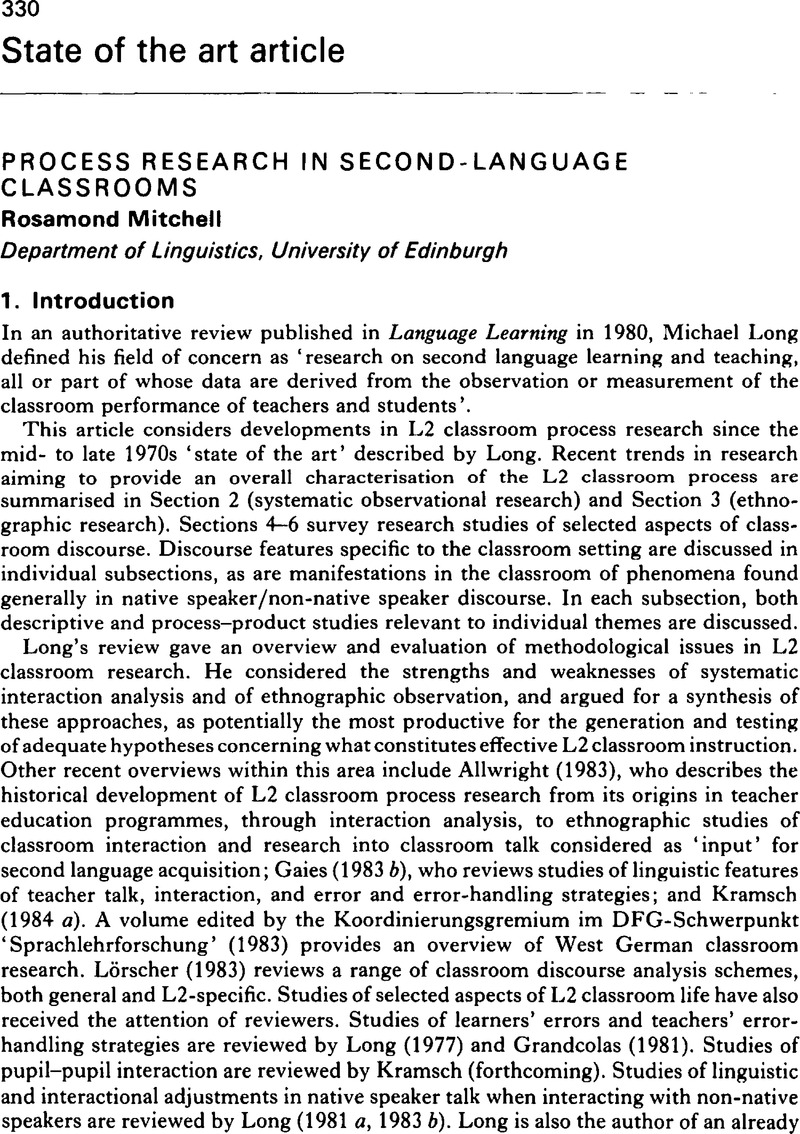Crossref Citations
This article has been cited by the following publications. This list is generated based on data provided by Crossref.
Mitchell, Rosamond
1986.
Current Trends in Second Language Classroom Research.
South African Journal of Linguistics,
Vol. 4,
Issue. 2,
p.
1.
van Lier, Leo
1989.
Classroom Research in Second Language Acquisition.
Annual Review of Applied Linguistics,
Vol. 10,
Issue. ,
p.
173.
Mitchell, Rosamond
1989.
Second language learning: Investigating the classroom context.
System,
Vol. 17,
Issue. 2,
p.
195.
Parkinson, Brian
1992.
Observing foreign language lessons.
The Language Learning Journal,
Vol. 5,
Issue. 1,
p.
20.
Mitchell, Rosamond
1996.
Current Trends in Second Language Classroom Research.
Southern African Journal of Applied Language Studies,
Vol. 4,
Issue. 2,
p.
1.
Spada, Nina
1997.
Form-Focussed Instruction and Second Language Acquisition: A Review of Classroom and Laboratory Research.
Language Teaching,
Vol. 30,
Issue. 2,
p.
73.
Senior, Rose M.
2001.
Creating safe learning environments: Developing and maintaining class cohesion.
Intercultural Education,
Vol. 12,
Issue. 3,
p.
247.
Castellà, Josep M.
Comelles, Salvador
Cros, Anna
and
Vilà i Santasusana, Montserrat
2006.
“Yo te respeto, tú me respetas”. Estrategias discursivas e imagen social en la relación comunicativa en el aula.
Infancia y Aprendizaje,
Vol. 29,
Issue. 1,
p.
31.
2017.
Encyclopedic Dictionary of Applied Linguistics.
p.
43.
Spada, Nina
2019.
The Cambridge Handbook of Language Learning.
p.
186.
2024.
The COLT Observation Scheme.
Vol. 60,
Issue. ,



